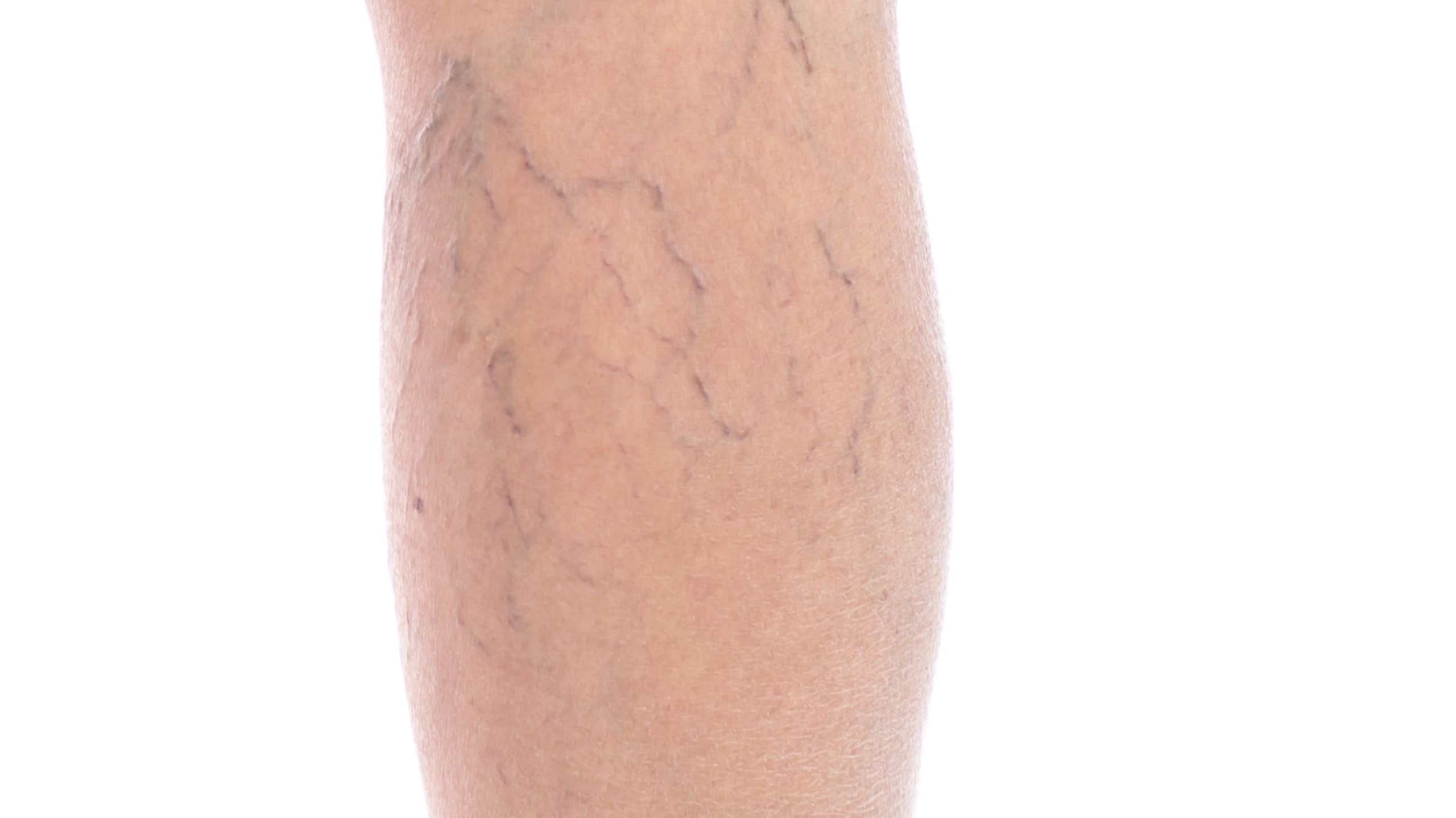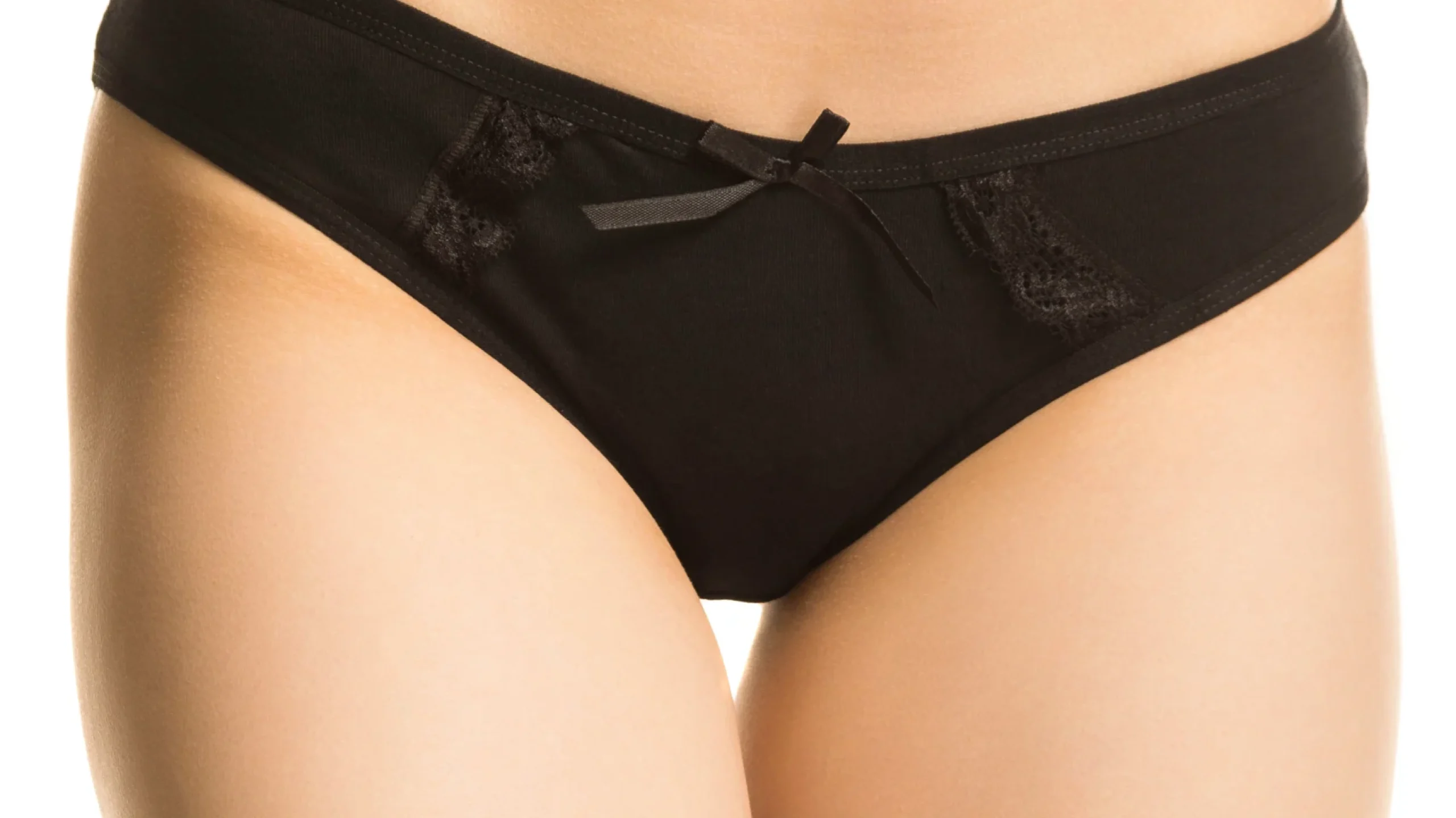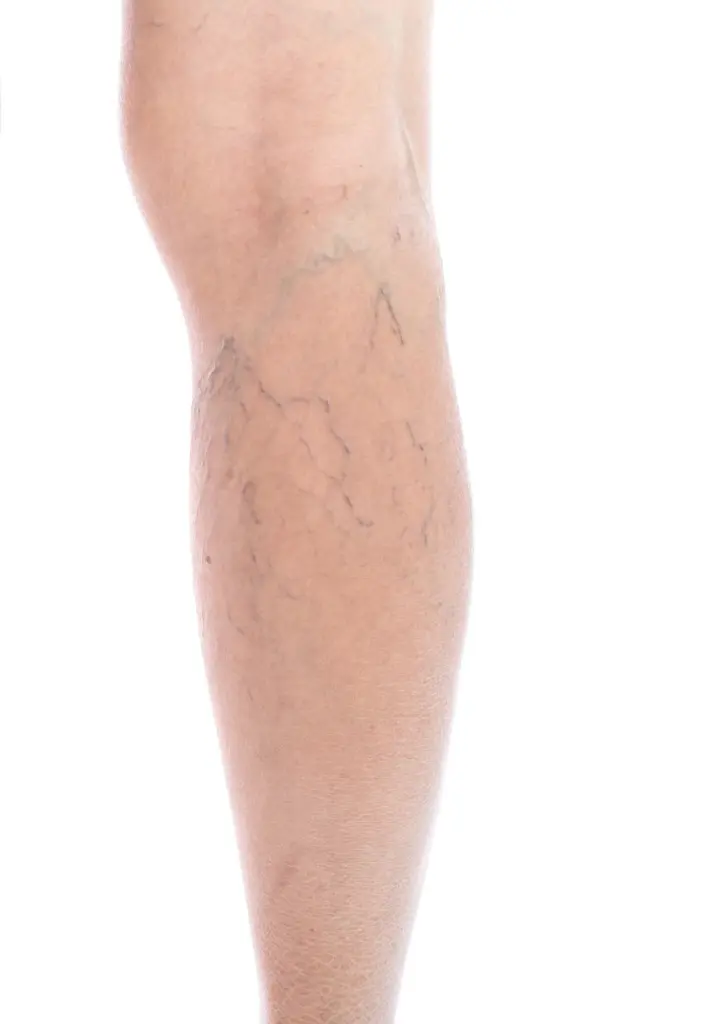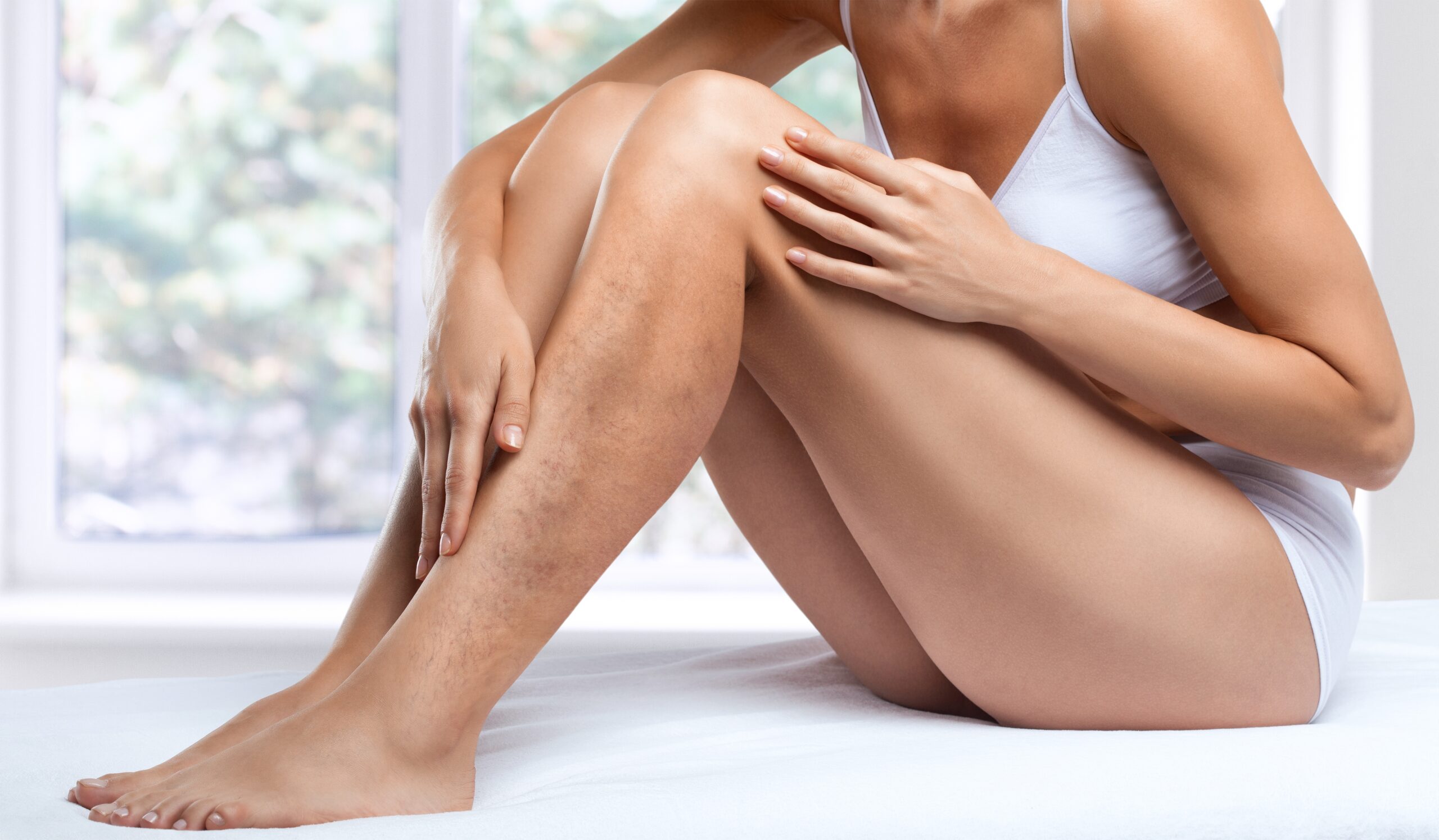Botox, Injections and Fillers
Sclerotherapy for Spider Veins Removal
Spider veins are small red vessels that typically appear on the legs over time. There are many causes such as crossing your legs, standing for long periods of time, and genetics. These habits that are detrimental to blood circulation can cause vessels to burst and swell. The solution is sclerotherapy, a treatment that effectively eliminates them.
Dr. Bailey will analyze your spider veins to determine how many sessions would be required. The number of veins treated in one session varies and depends on the vein size and location. The treatment is normally completed in 30 to 45 minutes.
Spider Vein Removal in Toronto
Sclerotherapy Treatment Indications

Sclerotherapy for Legs
Sclerotherapy is primarily performed on the legs, as this is where spider veins commonly occur. It is effective in treating spider veins, which are small, thin blood vessels visible near the surface of the skin.

Sclerotherpay for Thighs
Sclerotherapy secondary use is on the thighs. Spider veins can also appear on the thighs. Sclerotherapy can be used to treat these veins, improving the appearance of the skin.
Sclerotherapy Treatment Benefits
Sclerotherapy Benefits
Sclerotherapy is a treatment performed by a Dermatologist to eliminate or reduce spider veins. It is a procedure normally indicated to treat small vessels in the skin (usually on the legs) for aesthetic purposes.
Sclerotherapy involves an injection of a solution (generally a sugar/salt solution) directly into the vein. The solution irritates the lining of the blood vessel, causing it to collapse and stick together and the blood to clot. Over time, the vessel turns into scar tissue that fades from view.
Eliminates or reduces the appearance of spider veins.
Non surgical and minimally invasive with no downtime.
Quick procedure normally completed in 30-45 minutes.
Veins treated effectively typically do not reappear.
Sclerotherapy Treatment Details
How does Sclerotherapy work?
When the sugar/salt solution is injected directly into spider veins, it irritates the lining of the vein, causing it to swell and stick together. Over time, the vessel becomes scar tissue that visibly fades.
The technique consists of using a very fine needle to inject a dissolving solution into the spider veins. As the procedure continues, you will feel small needle pricks and possibly a mild burning sensation. The number of veins treated in one session varies and depends on the vein size and location. The treatment is normally completed in 30-45 minutes.
What are the benefits of Sclerotherapy?
Each sclerotherapy session typically results in the removal of 10 to 20 percent of the injected veins.

View Similar Treatments
Dermal Filler Treatment Experience
What To Expect During a Sclerotherapy Procedure
Before the Sclerotherapy procedure – Avoid shaving the day before, you may also consider wearing shorts so your legs are exposed.
During the Sclerotherapy procedure- Sclerotherapy is an outpatient procedure, and it does not require anesthesia. It usually takes less than an hour. For this procedure, you will lie with your legs slightly elevated. After cleaning the area to be treated with alcohol, Dr. Bailey will use a thin needle to slowly inject a solution into the appropriate vein. Some people may experience mild burning when the needle is inserted into the vein.
Once the needle is removed, Dr. Bailey will apply local compression to keep blood out of the injected vessel and disperse the solution. The number of injections will depend on the number and size of the veins to be treated.
After the Procedure- You will be able to get up and walk around as soon as the procedure is over. Walking and moving your legs is encouraged. You will also be asked to wear compression stockings or bandages (usually for about two weeks) to maintain compression on the treated veins. Most people will return to normal activity on the same day.
Results- Multiple treatments are needed to achieve the desired results. The final results can usually be seen after three to six weeks. Veins that respond to treatment usually do not return, but new veins can appear. A follow-up visit will be scheduled about a month after the procedure to determine the success and decide if more sessions are needed. In general, you should wait about 4 weeks before having another sclerotherapy session.
Your expert Dermatologist
Meet Our Double Board-Certified Dermatologist
Our Dermatologist
A life dedicated to Dermatology and skin care
Dr. Kristy Bailey is a Double Board-Certified Dermatologist and Medical Director and Founder of FCP Dermatology. She has a wealth of knowledge and expertise in Medical, Surgical, and Cosmetic Dermatology and is recognized as an expert in cosmetic injectables and minimally invasive procedures.
Her vision was for a world-class facility where patients can feel safe, comfortable, and pampered. A little oasis in the busy financial district, where everyone leaves looking more rested and youthful.

Dr. Kristy Bailey
MD, FRCPC, DABD
Dermatology Treatments
We offer a wide range of Dermatology treatments
We offer over 40 different dermatology and skin care treatments including; Botox, filler, facials, peels, body rejuvenation, face lifts, brow lifts, mole removal, wart removal, laser hair removal, dermal fillers, skin boosters, Radiesse filler, Sculptra, Belkyra Deoxycholic Acid, PRP treatment, botox for hyperhidrosis, Sclerotherapy for spider veins, hydrafacials, medical microneedling, carbon peels, vampire facials, green peels, skin tightening, melasma treatments, hyperpigmentation treatments, skin resurfacing and much more.
Specialists in Sclerotherapy Treatments
FCP Dermatology is your Toronto Dermatology Clinic! Learn more about Sclerotherapy treatments by contacting us!
All treatments are overseen by our Dermatologist
There are hundreds of nerves and arteries in your face and only a Board-Certified Dermatologist should be trusted to inject it.
At FCP Dermatology, all of our injections are performed by our Double-Board Certified Dermatologist Dr. Kristy Bailey, MD, FRCPC, DABD.
RELATED TREATMENTS
Frequently Asked Questions about Sclerotherapy
We are here to help answer any Sclerotherapy related questions you may have.
This treatment is applied by injecting a product with a very fine needle, causing as little discomfort as possible. You may have a mild burning sensation in the treatment area, as well as swelling. This will decrease after the first few hours.
This treatment is applied by injecting a product with a very fine needle, causing as little discomfort as possible. You may have a mild burning sensation in the treatment area, as well as swelling. This will decrease after the first few hours.
The vessel sclerosis is permanent, although there may be recurrences if the patient continues to cross their legs or stand for long periods of time.
It is recommended to use elastic compression stockings for 2 to 3 weeks after the treatment. It is advisable to avoid waxing in the first 24 hours and avoid sun exposure for the first 2 weeks.
In the days following sclerotherapy, you should avoid any strong contact on the treated area, such as shock waves or radio frequency that increase local heat.
Sclerotherapy is a cosmetic procedure which is not covered.
Avoid applying lotion to your legs before or after sclerotherapy. Wear loose, comfortable clothing. Bring compression stockings to your appointment.
Walking is encouraged, but you will also be asked to wear compression stockings or bandages (usually for about two weeks) to maintain compression on the treated veins.
The cost of Sclerotherapy depends on the severity of the veins being treated and the number of sessions. Please consult with our team of experts for customized pricing.
There are some contraindications to be considered: These include known allergy to sclerosants, severe systemic disease, acute deep or superficial vein thrombosis, local or generalized infection, immobilization or bedridden patient. There are also relative contraindications such as pregnancy, leg edema, uncontrolled diabetes, mild arterial occlusive disease, poor general health, bronchial asthma, hypercoagulability syndrome, bleeding disorders and a history of deep vein thrombosis.


